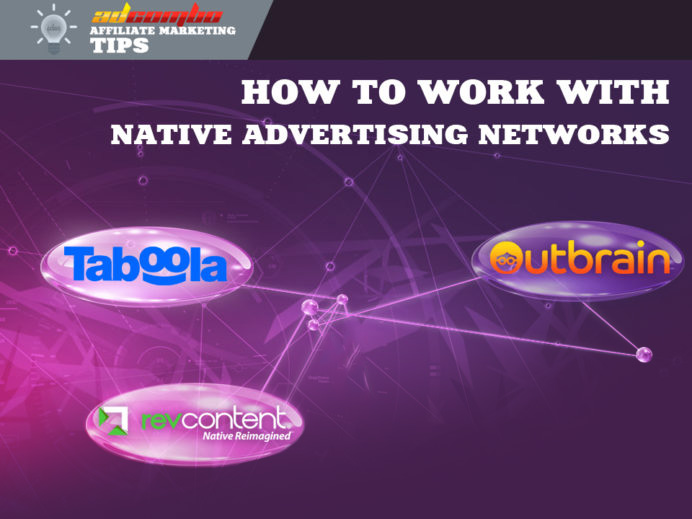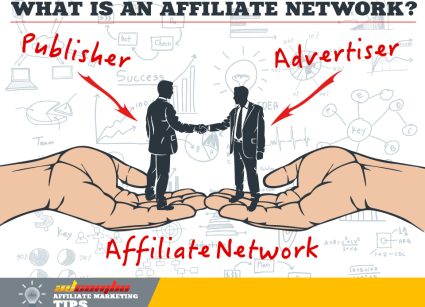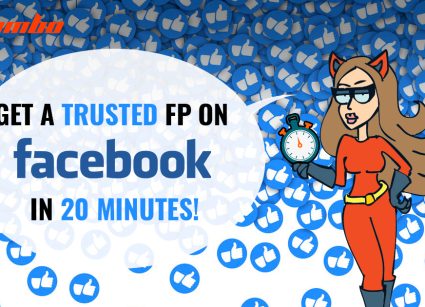-
 How to Work with Native Advertising Networks14.2.2017Reading Time: 4 minutes
How to Work with Native Advertising Networks14.2.2017Reading Time: 4 minutesHow to Work with Native Advertising Networks? Native advertising isn’t new. Arguably, it has been around for as long as the advertising itself.
Native advertising – “a type of advertising, mostly online, that matches the form and function of the platform upon which it appears. ” In short, it is the advertising that looks like regular content rather than looking like an ad. And in this digital age with a growing mistrust of traditional advertising, interest in native advertising is skyrocketing. This represents a huge opportunity for affiliates, both as an advertiser and as a publisher.How to Start
If you are interested in leveraging native advertising networks to generate some profit, you can do this both as an advertiser and as a publisher. Depending on the network, the signing up process can vary slightly, but it typically involves filling out a form and waiting for account approval.
In the context of today’s article, we will only be talking about native advertising in so far as content discovery. These are the ads placed on websites that typically link to other, presumably relevant content. That’s a big differentiating factor, because other ads may link directly to product pages or third-party purchase pages.
As a publisher, you typically need to add your website to your account, possibly select relevant categories of content, and copy a code snippet to the appropriate location on your site. The content discovery widget will then appear and most native advertising networks will pay you either on a CPC or CPM basis.
By and large, native advertising creative materials consist of a widget that displays one or more articles that are “suggested” to your site visitors. This suggested content usually takes on the form of a thumbnail image and the article headline, with or without a short snippet or description.
As an advertiser, the experience is similar, just from the other side of the transaction. Submitting your content to the native advertising network means that it usually has to pass a certain set of standards. It also means that you must have a suitable featured image and a title of the article. After funding your account and establishing your ad parameters, like your daily spend or targeting details, your ad can go live in minutes.
Understanding the Main Rules
Every advertising network has its own set of terms and conditions. So it is important that you familiarize yourself with what is and isn’t allowed with each network you decide to work with.
There are going to be exceptions. Some of these are more general guidelines to improve your chances at overall success. A few fundamental rules and tips that you will typically want to keep in mind are the following:
- No Adult Content. Some networks may allow it, but the majority tend to stray away from adult-oriented content. This is both for publishers and for advertisers. Similarly, most networks won’t allow you to promote illegal content and some are not compatible with igaming sites.
- Provide Value. As a publisher, if your site doesn’t attract an engaged audience, you’re not going to get the traffic numbers you need to earn decent revenue from native ad networks. Your core content needs to be good. Similarly, as an advertiser, many native ad networks do not allow you to link directly to a product page. Instead, you need a pre-landing page and this usually takes on the form of a “useful” article. This is perfect for affiliate marketing, because you can pre-sell the offer to the reader by providing real value. A common practice is to make it so that clicking anywhere on the entire pre-landing page directs the visitor to the actual landing page.
- Be Careful About Compliance. FTC standards in the United States and similar guidelines in other countries around the world require suitable disclosure on advertorials and sponsored content. Keep this in mind to make sure you don’t get yourself banned from a native ad network for not complying with such rules in an effort to increase profit.
What Can You Expect for CTR and CPC?
Asking how much you can expect to earn as a publisher with a native advertising network or how much you can expect to pay as an advertiser promoting your own content is akin to asking how much it costs for a hotel room or to buy a car. It depends. It depends on many factors, including geography, network, traffic quality, traffic amount, and more.
A few typical averages have emerged over the years from the native ad networks and you can take these as a starting point.
- Click-through rate (CTR). Assuming that the widgets are well-placed and properly featured, many publishers have CTR somewhere in the 0.5% range. This is in line with the CTR publishers get with other networks, like Google AdSense. Of course, as a publisher, there are ways to try and optimize this.
- Cost per click (CPC): Many native advertising networks operate on this model. From the perspective of an advertiser with one of the more prominent networks, you can expect to pay around 25 to 35 cents per click. This CPC can vary widely by topic area and geography.
- Cost per thousand (CPM). Bearing in mind that this is distinctly different from the eCPM you might calculate based on a CPC and total traffic, networks that operate on a CPM basis tend to be in the $10 range, especially to be featured on higher tier publications that negotiate their own deals. This can sometimes involve a minimum buy as well.
Top Native Advertising Networks
Some great native ad networks have emerged in recent years, representing huge opportunities for advertisers and publishers alike.
- Taboola: One of the largest content discovery networks on the Internet, Taboola is very selective with the publishers it approves. Native placements are found on such sites as NBC, USA Today and Business Insider.
- Outbrain. Often mentioned in the same breath as Taboola, Outbrain is another one of the largest native advertising networks today. It is also very selective about quality. This can make it more difficult for both advertisers and publishers to get approve.
- RevContent. RevContent is growing quickly and allows for some targeting, including a retargeting pixel. The responsive widgets are great for publishers.
Sponsored content, advertorials and native content aren’t just a trend to watch as an Internet marketer. But they’re something you should be actively considering as part of your promotional and monetization mix.





Thank you for a very well written and informative post! I can’t wait to take all this information and apply it to my site!
This is a very informative blog I must say.